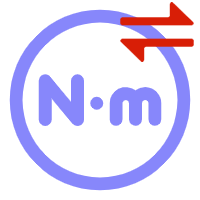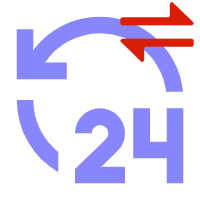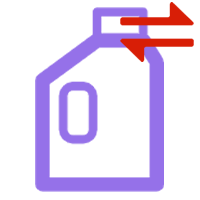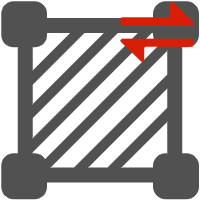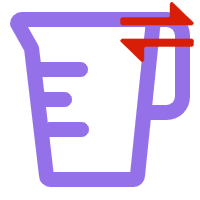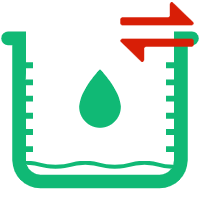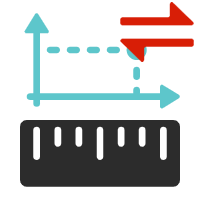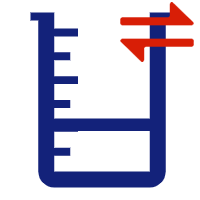
Liters to Milliliters Converter
Convert liters to milliliters instantly with our volume converter. Perfect for cooking recipes, baking measurements, scientific experiments, laboratory work, and metric conversions. Get accurate results.
Liters to Milliliters Converter
Enter liters value and click Convert to get milliliters.
Enter the value to convert
Relationship Between Liters and Milliliters
The conversion between liters and milliliters is based on the metric system relationship where 1 liter equals exactly 1000 milliliters.
1 L = 1000 mL
Therefore,
1 mL = 0.001 L
To convert liters to milliliters, we multiply the value in liters by 1000.
For example, 1 liter equals 1000 milliliters, 0.5 liters equal 500 milliliters, and 2.5 liters equal 2500 milliliters.
Liter (L)
What is a Liter (L)?
A liter (or litre in British English, symbol: L or l) is the base unit of volume in the metric system. It is defined as equal to one cubic decimeter (1 L = 1 dm³ = 1000 cm³). The liter is widely used worldwide for measuring liquids and is the standard unit of volume in most countries.
History and Origin of the Liter
The liter was introduced in France in 1795 as part of the metric system. Its name comes from the French 'litron', an old unit of volume. Originally, the liter was defined as the volume of one kilogram of pure water at 4°C and standard atmospheric pressure. In 1964, the definition was changed to exactly one cubic decimeter to align it more precisely with the metric system's base units.
Modern Applications of Liters
- Beverages: Bottle sizes for water, soft drinks, milk, juice (0.5 L, 1 L, 2 L bottles)
- Automotive: Engine displacement, fuel capacity, oil volume
- Cooking: Recipe measurements for large quantities
- Agriculture: Irrigation water, liquid fertilizers, pesticides
- Industrial: Chemical processing, manufacturing liquids
- Swimming Pools: Pool volume and water treatment
- Fuel Consumption: Car efficiency measured in liters per 100 km
- Medical: IV fluid bags, large volume measurements
Liter in Different Countries
The liter is universally recognized and used in most countries around the world:
European Union: Standard unit for all liquid measurements
Commonwealth Countries: 'Litre' spelling is preferred
United States: 'Liter' spelling; used alongside gallons
Asia and Africa: Primary unit for liquid volumes
The liter's worldwide adoption makes it one of the most important volume units in international trade and science.
Milliliter (mL)
What is a Milliliter (mL)?
A milliliter (symbol: mL or ml) is a unit of volume in the metric system, equal to one thousandth of a liter (1 mL = 0.001 L). It is also equal to one cubic centimeter (1 mL = 1 cm³). The milliliter is widely used for measuring small volumes of liquids, particularly in cooking, medicine, and laboratory settings.
History and Origin of the Milliliter
The milliliter is part of the metric system, which was developed in France in the late 18th century during the French Revolution. The prefix 'milli-' comes from the Latin 'mille' meaning thousand, indicating one thousandth of a liter. The metric system, including milliliters, was designed to provide a decimal-based, universal system of measurement that would be easier to use than the various regional systems that existed at the time.
Modern Applications of Milliliters
- Cooking and Recipes: Standard measurement in most countries outside the US
- Medicine and Pharmacy: Liquid medication dosing and prescriptions
- Laboratory Work: Precise liquid measurements in scientific experiments
- Beverages: Drink volumes on product labels (soft drinks, alcohol content)
- Automotive: Engine oil, coolant, and fluid measurements
- Cosmetics: Perfume, lotion, and beauty product volumes
- Baby Formula: Infant feeding measurements
- Chemical Industry: Precise mixing and formulation
Advantages of Milliliters
Milliliters offer several advantages as a measurement unit:
Decimal System: Easy conversions within the metric system (1,000 mL = 1 L)
Universal Standard: Used worldwide in most countries
Scientific Precision: Accurate for small volume measurements
Medical Standard: Preferred for dosing medications safely
The milliliter's simple relationship with the liter makes it particularly easy to convert between different volumes in the metric system.
Liter to Milliliter Conversion Table
The conversion of liters to milliliters for certain values are provided below:
- Liters [L]
- Milliliters [mL]
- 0.001 L
- 1 mL
- 0.01 L
- 10 mL
- 0.05 L
- 50 mL
- 0.1 L
- 100 mL
- 0.25 L
- 250 mL
- 0.5 L
- 500 mL
- 0.75 L
- 750 mL
- 1 L
- 1000 mL
- 1.5 L
- 1500 mL
- 2 L
- 2000 mL
- 2.5 L
- 2500 mL
- 3 L
- 3000 mL
- 4 L
- 4000 mL
- 5 L
- 5000 mL
- 7.5 L
- 7500 mL
- 10 L
- 10000 mL
- 15 L
- 15000 mL
- 20 L
- 20000 mL
- 25 L
- 25000 mL
- 50 L
- 50000 mL
- 100 L
- 100000 mL

Conversion Calculators

